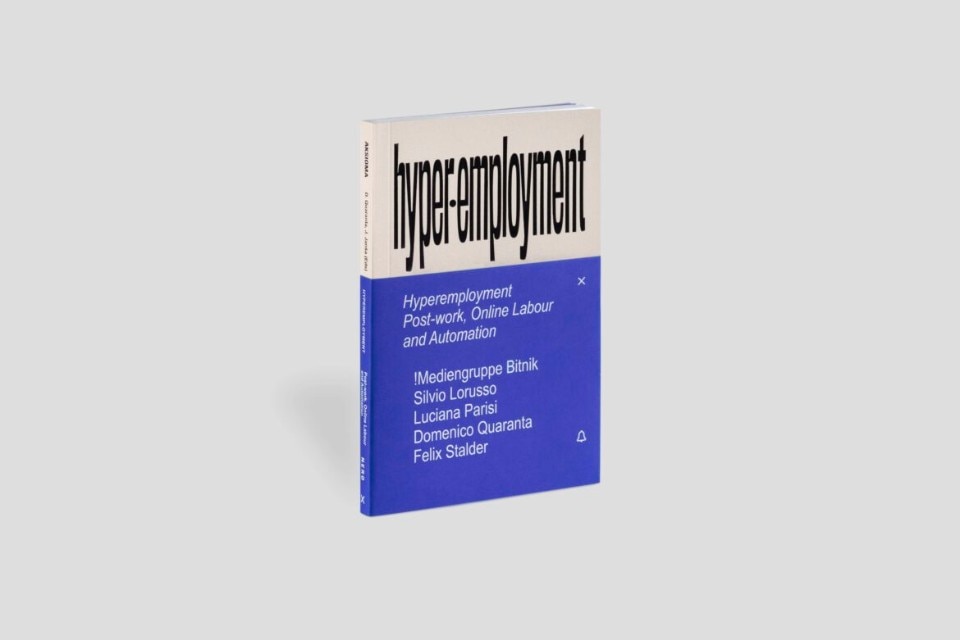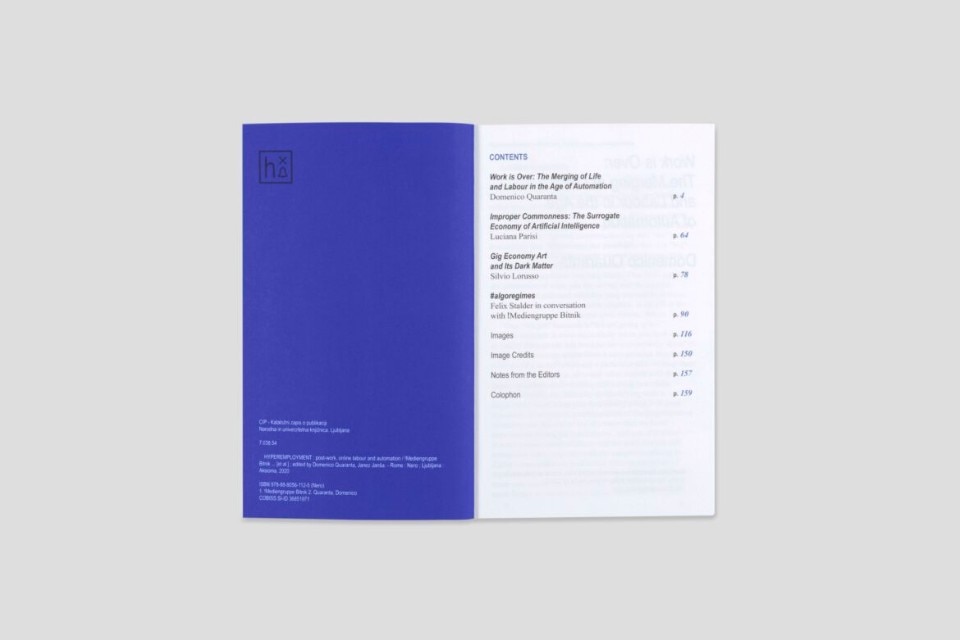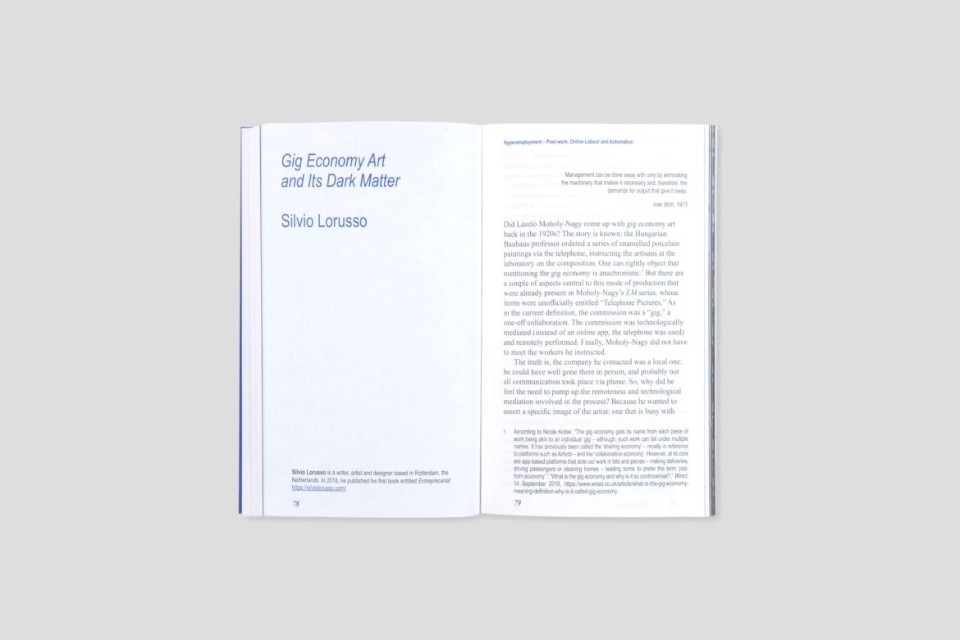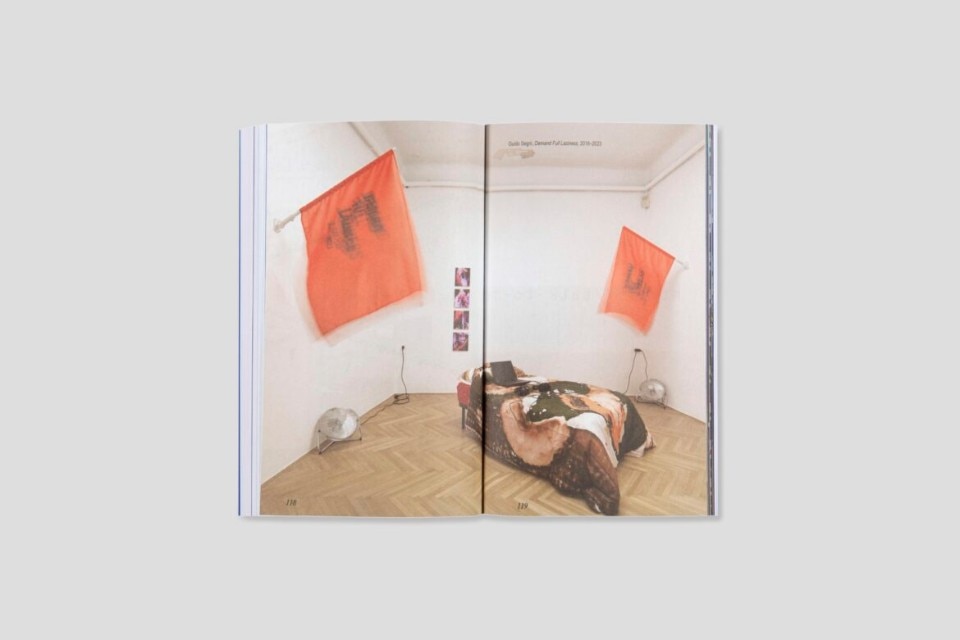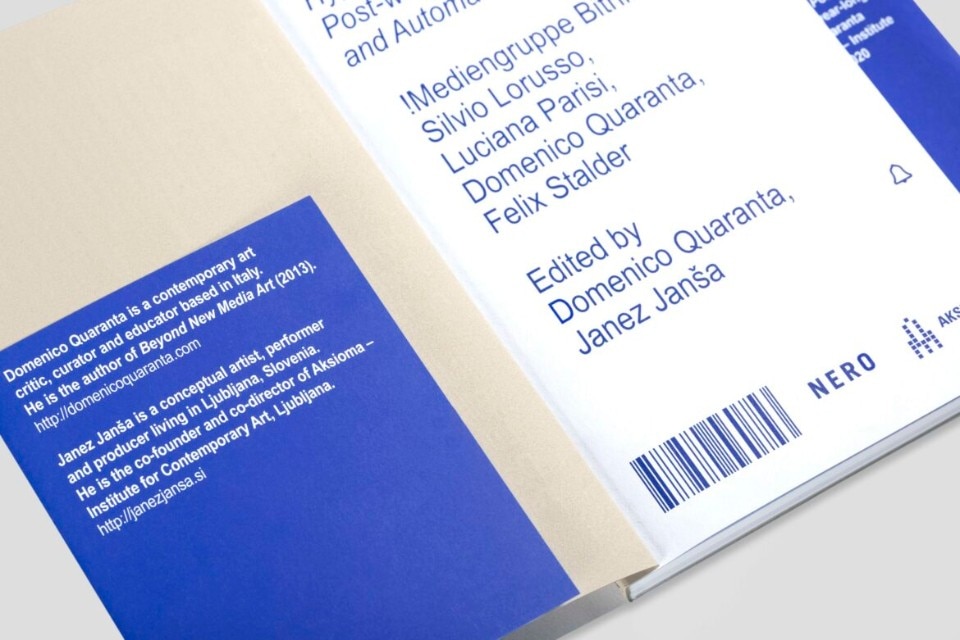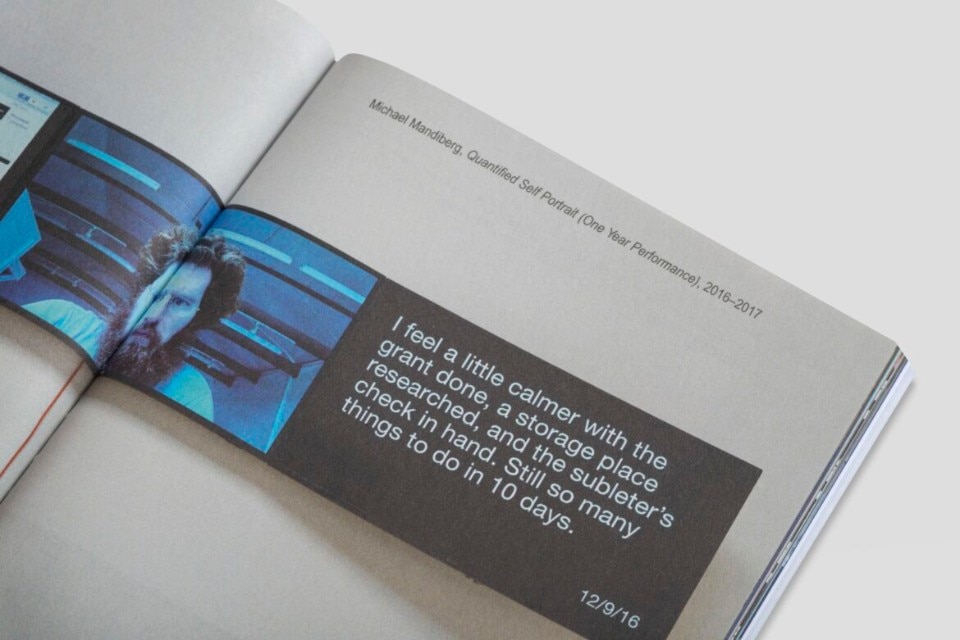Hyperemplyment is the book that all of today’s “horizontal workers” should read. Hugh Hefner, founder of Playboy, calls “horizontal workers” those who, just like him, work “horizontally” – that is, on the sofa, or in his case, on the round bed of the famous Mansion in Chicago where the magazine was created. Paul B. Preciado, in his essay published on Artforum and called Learning from the Virus, uses this definition to describe the condition we’ve been living in during the pandemic. Forced to transform our domestic space into a workplace, every day we must monetise our time in the space in which (in theory) we should also enjoy pleasant moments. “Hyperemployment” is the term coined by academic and video game designer Ian Bogost, and is also the title of the book that examines the evolution of the concept of labour in the pandemic era and the condition of workers in a time when labour and life merge together.
In the first chapter, Domenico Quaranta quotes Preciado in order to introduce the reader to the themes of a book that is both reassuring and anxiety inducing at the same time, as it allows each of us to identify with a disturbing common condition.
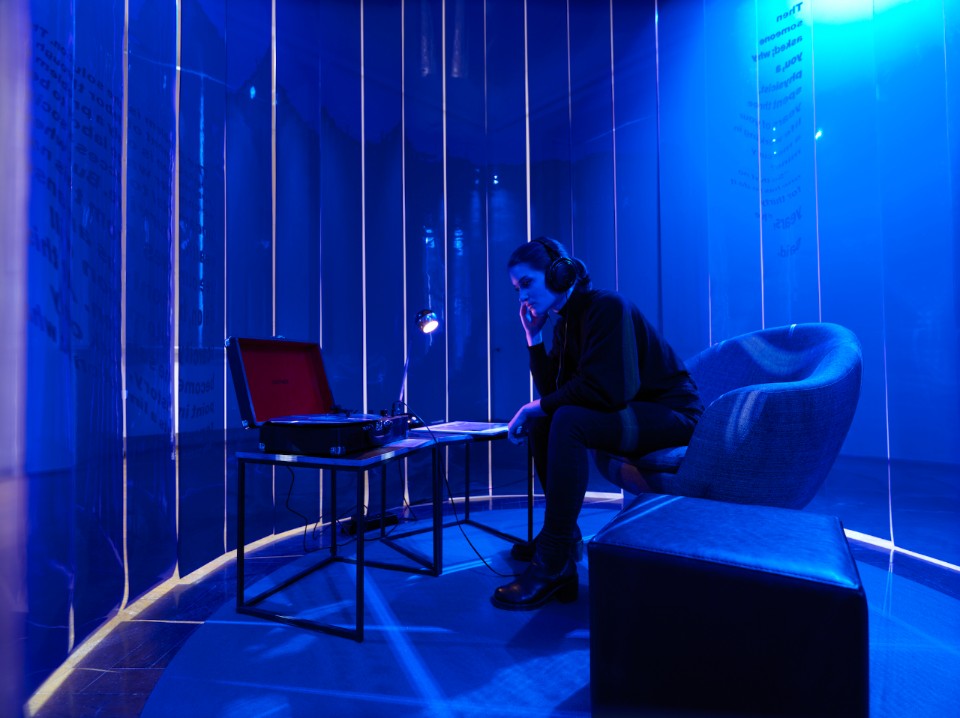
The texts in the book are closely linked to the current health crisis. I wonder if this period of discontinuity gave the opportunity to draw such conclusions?
It is an error of perspective to think that certain solutions were suggested by the virus and its consequences – the truth is that the infrastructure was already all there, ready to be fully exploited. Hyperemployment was launched in 2019 as an exhibition project. Over the previous decade, many artists that I deeply appreciate addressed the issues of online labour, the impact of automation, and AI. Online labour was one of the main subthemes of Cyphoria, the exhibition I curated in 2016 for the Rome Quadriennale. When Aksioma, a contemporary art institute in Ljubljana, asked me to submit an idea for an exhibition to them, it seemed natural to focus on this theme. Hyperemployment then turned into a year-long programme [1], that would start with the group exhibition I curated, and end with the publication of a book. The exhibition opened in November 2019 so no, it was not inspired by the pandemic, nor do I consider it a particularly far-sighted project. If the pandemic had occurred in another era, we would not have invented smart working – we would simply have reacted in another way. Let’s just say that reality was far-sighted, and the artists picked up the signals thank to their magnificent antennae. Those who connect the dots and tell you what is happening one minute before it happens have very little merit left.
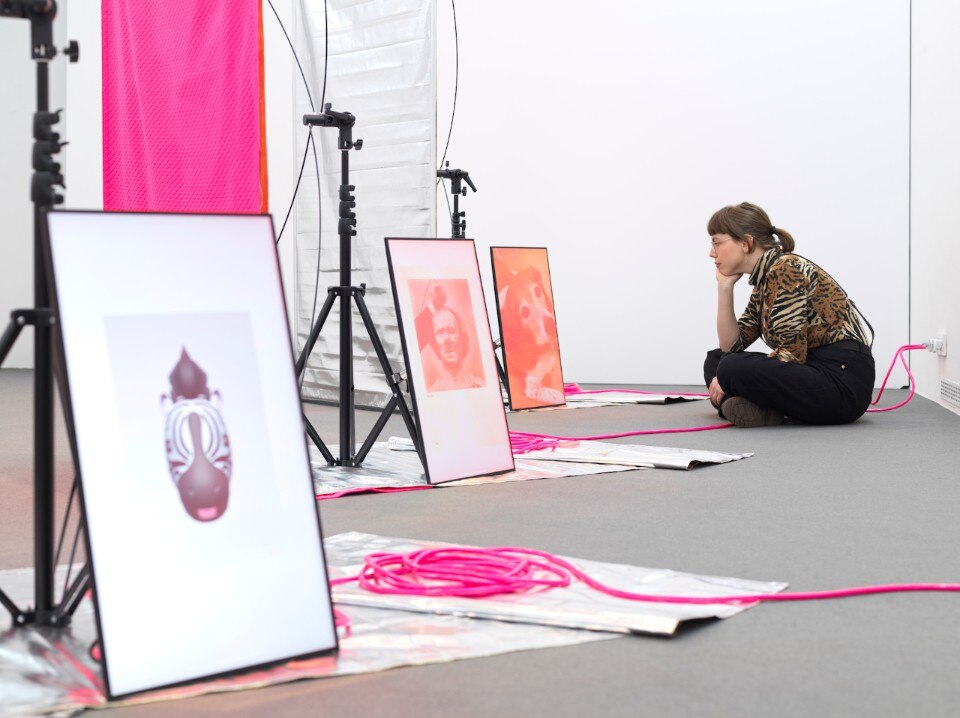
The fatigue and frustration of the so-called “horizontal workers” are likely to have reached its peak during 2020. How can we have a fresh start after this book?
By bringing on a radical change that has to take place, more than through thoughts or actions, through imagination. Both the exhibition and my text in the book end with Reverie, On the Liberation From Work [2], a 2017 work by Danilo Correale. Reverie is a two-chapter guided meditation exercise that helps us imagine a post-work future. The implicit assumption is that the end of work, which massive unemployment and the increasing automation of every aspect of the production cycle suggest, will not happen because we are simply incapable of imagining it – work is so deeply rooted in our value system and in the way we organize our lives that it is virtually impossible to imagine how it would be without it. Of course, it won’t be a hypnosis session that convinces us otherwise, but Reverie has a precise goal: a new post-work, post-capitalist, post-pandemic imaginary must be built, patiently and collectively. We need to sketch it, work on the details, make it credible and then believe in it. Perhaps, this imaginary will begin to affect the way we act on the present, which is the only way we can change the future.
Life and labour have merged together. In the ‘60s and ‘70s, many protagonists of Italian neo-avant-garde architecture, used architecture to say the same thing when describing their years of activity and research. But at the time, it had a positive meaning.
When I was a child, my grandfather liked to tell me that anecdote about Vittorio Alfieri – that he had himself tied to a chair in order to fulfil his writing mission. When, in 2001, I read The Hacker Ethic and the Spirit of the Information Age by Finnish philosopher Pekka Himmanen, I immediately identified with the work ethic of hackers, and their passionate relationship with programming, which provides them not only with a livelihood, but also with social life and entertainment, and enables them to contribute to the common good. Work as a mission of the artist, and work as a passion of the hacker, are strong ideal models that not even neo-liberal cynicism has managed to truly undermine. If, right now, I’m doing this interview instead of playing with my kids, watching a movie or scrolling through Tik Tok, it’s not just because it helps me sell a book – it’s because it connects me to you, and potentially to other people; because it entertains me, it makes me feel accomplished and alive, an active member of a community; it makes me feel, with a little postmodern embarrassment, on a mission. If, after this work is over, we continue to “work”, it is because these ideals have survived.
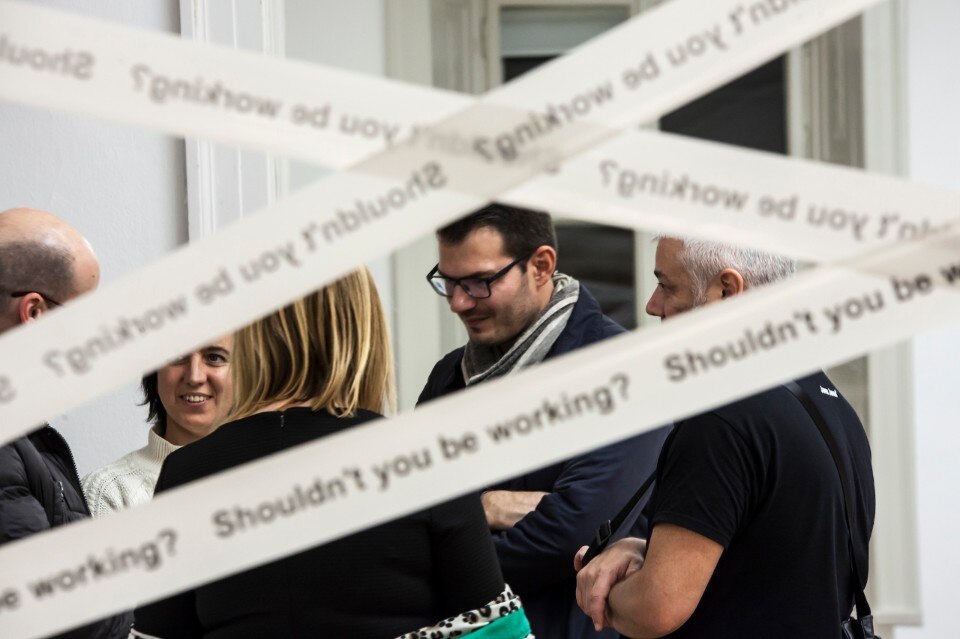
What is it, then, that spoils them? Why do we see work-life identification as a disease?
Because, as Tiziana Terranova explained long ago [3], all the “free labour” we pour out onto the internet generates capitalist surplus value; because any interaction we have with our devices (including watching a film, reading a book, scrolling through Tik Tok, video-calling our loved ones, doing an interview for Domus, even sleeping next to our smartphones) is subjected to the same dynamics; because, while we become poorer ourselves, a bunch of companies gain immense wealth thanks to our ability to generate and share data; because, as Silvio Lorusso [4], one of the authors of Hyperemployment, noted, our mission and passion are regurgitated on us as dictates of an entrepreneurial vision of existence that only serves to make us tolerate its precariousness; and because any effort we make to free ourselves from this quicksand only makes us sink deeper. The pandemic has only accentuated this perception: it has locked us in, forcing us to mediate our every interaction and activity, and while we slowly lose our life savings, some companies increase their income extremely quickly.
Free time no longer exists because we are constantly online, and can be tracked down within seconds. Why are we no longer able to control this abuse of control?
It is difficult to give a single answer. Do you remember the first time you answered an email you had just received while travelling by train? Or the first time a confident voice led you where you needed to go, without having to stop and find your way on a map? Or the first time Amazon suggested a wonderful book that you would never have found at the closest library? It was electrifying. The fact is that we are lab rats who are constantly exposed to technological innovations without them being tested in a safe environment to study their long-term effects. When a new device comes out, a new app is presented, there is a significant evolution in the technological infrastructure available to us, it is as if the CIA in the 1950s, instead of launching the Project MKUltra, had poured LSD directly into the water main. Technologies impose their logic on us, which quickly become automatisms, and before we are aware of it, we are reprogrammed.
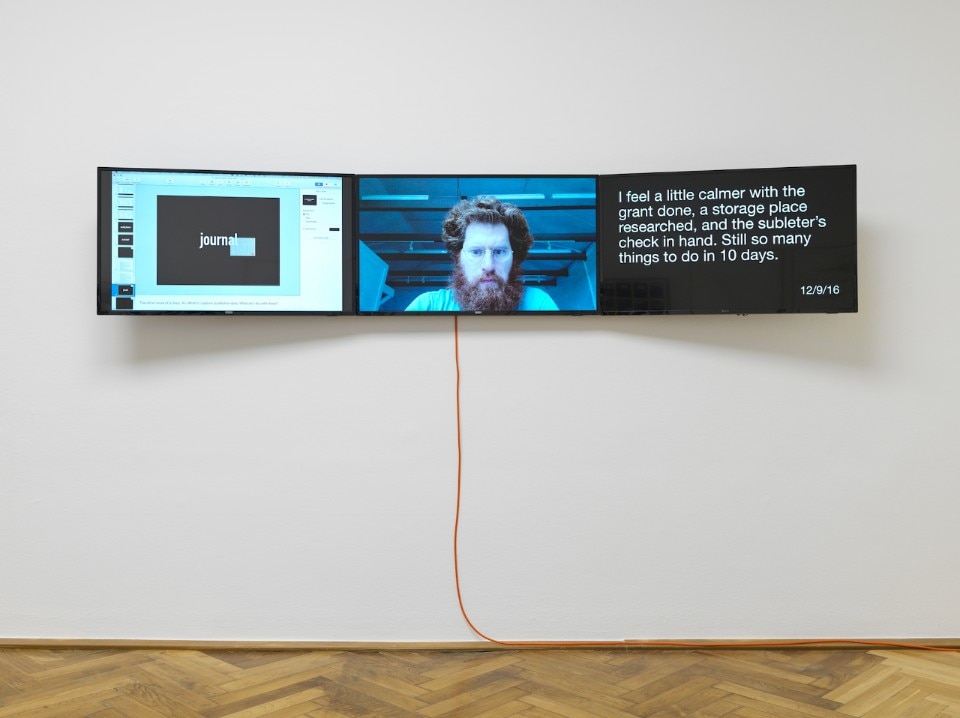
The only tools that can limit us are the devices themselves? I’m thinking, for example, of Apple’s or Microsoft’s monthly usage report.
Time management apps are fun, but they make us see the symptoms rather than offer us the cure. We should learn to think of free time as a value, and cultivate it through continuous exercise and effort, a continuous review of our choices, even the smallest ones. When I go out to smoke a cigarette, do I bring my phone or not?
So, when is it precisely that we experience pleasant moments today?
That is not the right question. Plesant moments can be found everywhere: in the sticker I’ve just received, in the Instagram story I’ve shared, in the delivery guy bringing me a package I ordered only yesterday, in the pixelated screenshot of my mother I took during our last video call. That’s the whole problem.
Speaking explicitly about social media, it is clear that we work for Facebook, for Instagram, for Tik Tok and so on, every day. For free.
One of the most likely (or at least conceivable) hypotheses of a post-work society is based on the partial redistribution of the immense revenues of social network capitalism to citizens, who actually provide the raw material of this economy – that is, their data. It sounds fair, just, even sustainable. But I wonder: would seeing us rewarded for the data we now provide for free save us from the discomfort of seeing our interactions, our affections, our contributions become monetised?
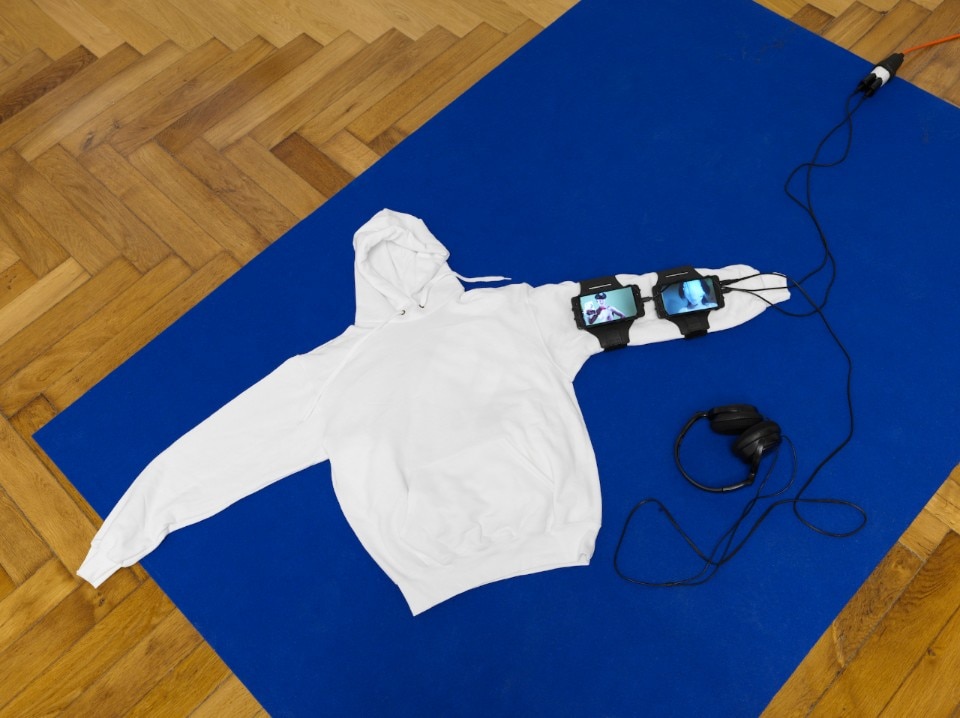
I have recently become interested in why we wear workwear in an urban context. Many brands claim this trend is an opportunity for people who are used to working on their computer for more than ten hours a day to experience that nostalgic and romantic feeling of being part of a social class working in the primary and secondary sector. What do you think about it? Don’t you find it a bit offensive and classist?
No, I don’t find it offensive and classist. The nostalgic and disenchanted comeback of workwear in fashion seems to be the definitive confirmation of the death of a “form of labour” whose positive aspects included the possibility of expressing class identity and solidarity. As Bifo, among others, noted in his splendid introduction to After the Future (2011), the globalisation of the labour market and the rise of precarious workers have deprived the new generations of the possibility of recognising themselves in a series of shared values, of expressing a social conscience and giving life to conscious collective action. According to Bifo, workers’ solidarity has been deeply undermined. Rather than the recovery of an idea of work that coincides with getting one’s hands dirty, the phenomenon of which you speak seems to be a nostalgic homage to a solidarity and empathy that are now impossible to obtain, but which this generation has most likely been able to learn about during their childhood, from the lives and voices of the fathers and grandfathers who wore those overalls -working-class fathers who, thanks to their struggles, took their families from the proletariat to the middle class, sent their children to university, and manage to provide stability to their uncertain and fluctuating lives still to this day.
- [1]:
- Hyperemployment – Post-work, Online Labour and Automation, !Mediengruppe Bitnik, Felix Stalder, Silvio Lorusso, Luciana Parisi and Domenico Quaranta, 2020, Nero
- [2]:
- What is “Reviere”?, Danilo Correale, 2017. http://www.danilocorreale.com/revr
- [3]:
- Producing Culture for the Digital Economy, Terranova Tiziana, 1967, Duke University Press
- [3]:
- Entreprecariat, Silvio Lorusso, 2019, Onomatopee
Opening image: Guido Segni, Demand Full Laziness, 2018 - 2023. Vista dell'installazione in Hyperemployment, MGLC - International Centre of Graphic Arts, 7 novembre 2019 - 19 gennaio 2020. Photo: Jaka Babnik. Archive: MGLC, Aksioma.




